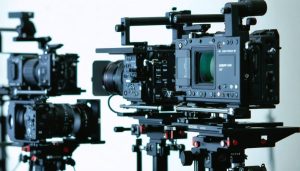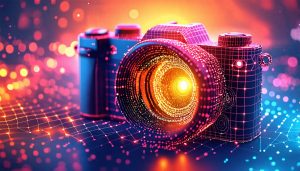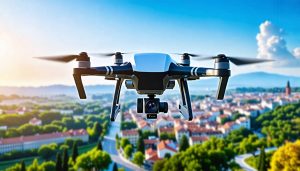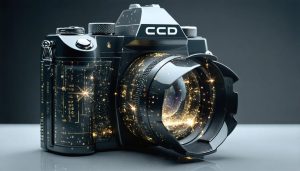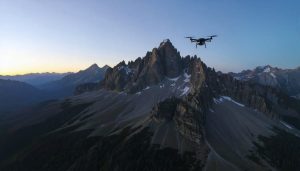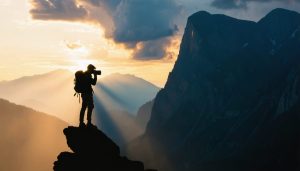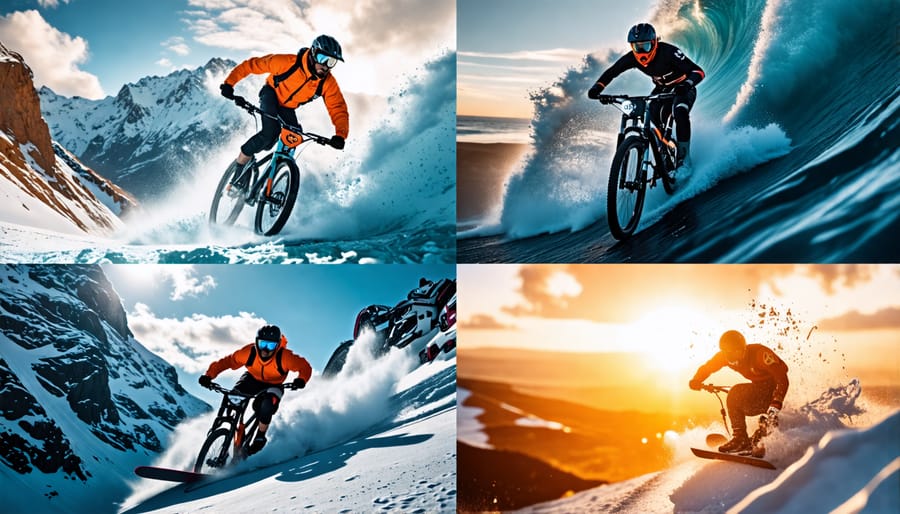
Adjust your frame rate to suit your activity; for fast-paced action, opt for 60 fps or higher to capture every detail smoothly. Set your resolution based on end-use; 4K is excellent for high-quality footage that captures the finest details, while 1080p offers a balance of quality and file size. Experiment with the field of view settings—wide-angle lenses are great for immersive action shots, but narrow views can focus on specific subjects. Use your camera’s stabilization features to minimize shakiness, ensuring cleaner, professional-looking videos.
Understanding Your Action Camera
Key Features of Action Cameras
Action cameras have transformed the way we capture adventures, bringing a unique blend of compactness, durability, and advanced video capabilities to the industry. These devices are designed to be portable yet powerful, allowing you to document thrilling experiences like surfing, rock climbing, or even drone photography, without the hassle of cumbersome equipment. Their small size means they can be mounted virtually anywhere—from helmets to handlebars—providing unparalleled flexibility in framing your shots.
The hallmark of any good action camera is its durability. Built to withstand harsh conditions, these cameras are often waterproof, dust-proof, and shock-resistant, making them perfect for capturing high-speed adventures without worrying about damage. Moreover, modern action cameras boast impressive video capabilities, offering resolutions up to 4K and even 5K, along with high frame rates, which ensure smooth and vivid footage.
For photographers and enthusiasts, these features not only enable creativity but also empower you to adapt to various settings and environments, making every shot count.
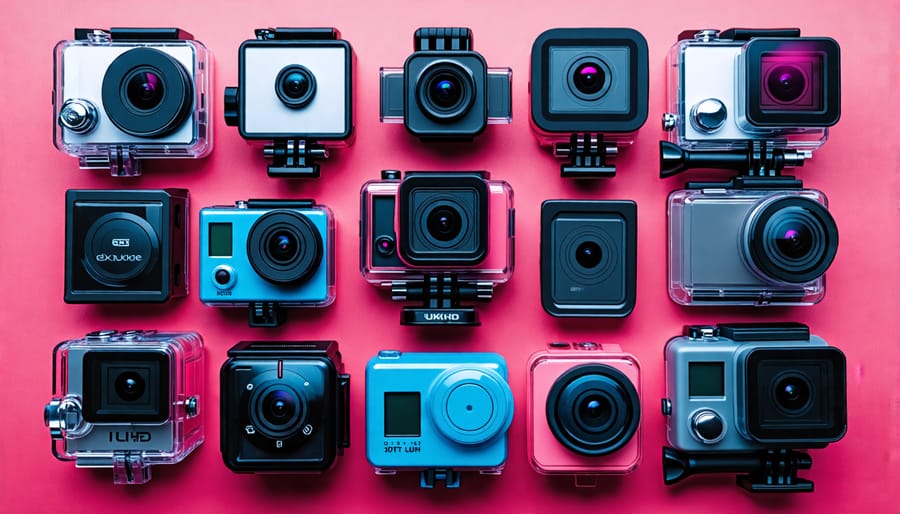
Why Settings Matter
Imagine capturing the thrill of a mountain bike descent or the serene beauty of a sunset surf session. The secret to preserving these moments with vivid clarity often lies in adjusting your action camera’s settings. Different environments present unique challenges—low light, fast movement, and varying weather conditions can all impact footage quality. By tweaking settings like resolution, frame rate, and exposure, you can dramatically elevate the quality of your videos and photos. For instance, a higher frame rate is essential to smoothly capture rapid actions, while adjusting the exposure can ensure details aren’t lost in shadow or glare. Consider a snowy mountain run; increasing your camera’s exposure compensates for the intense brightness of the snow, resulting in clear, vibrant footage. Through tailored settings, your camera truly becomes an extension of your creative vision, enabling you to not just document experiences, but to relive them in stunning detail.
Essential Action Camera Settings
Resolution and Frame Rate
When it comes to action camera settings, understanding resolution and frame rate is crucial for capturing stunning visuals. Resolution refers to the detail an image holds; higher resolutions like 4K or 5.3K provide incredible clarity, ideal for showcasing fine details in landscapes or action shots. However, they often consume more storage and may not be compatible with all devices. In contrast, a resolution like 1080p delivers excellent quality while being more manageable for storage and sharing across platforms.
Frame rate, measured in frames per second (fps), influences how smoothly your video will play. Higher frame rates, such as 60fps or even 120fps, are perfect for capturing fast-paced action sequences like surfing or motocross with minimal motion blur, and they also allow for dramatic slow-motion effects in post-production. Meanwhile, a standard frame rate like 30fps is sufficient for most general-purpose shooting, delivering a natural, cinematic feel.
Consider this scenario: you’re capturing a mountain biking adventure. Opt for 4K at 60fps to ensure you capture every detail and movement crisply. Alternatively, for a family picnic, 1080p at 30fps offers a great balance of quality and practicality. By adjusting resolution and frame rate according to your needs, you’ll enhance your storytelling and elevate your video quality.
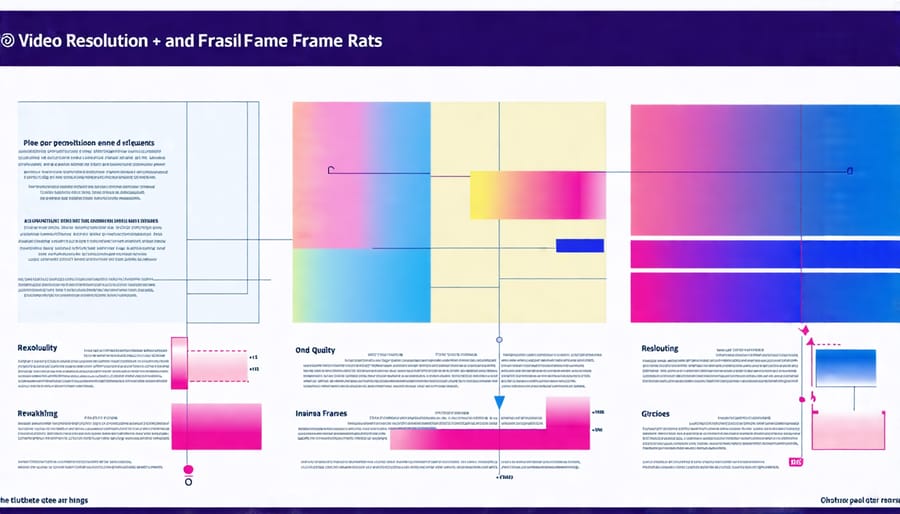
Field of View (FOV)
Selecting the right Field of View (FOV) setting on your action camera can dramatically shape the story you’re trying to tell through your shots. FOV refers to the extent of the observable world that the camera captures. Most action cameras offer several FOV options, such as wide, medium, and narrow. A wide FOV is perfect for capturing expansive landscapes or dynamic action scenes, like skiing down a slope, where you want to include as much of the environment as possible. This setting often results in a fisheye effect, which adds a dramatic flair to high-energy footage.
For moments where you want to focus on specific subjects or reduce distortion, a medium or narrow FOV might be more appropriate. Imagine capturing a mountain biker navigating a rugged trail; a medium FOV would keep the attention on the rider while still showcasing some of the surrounding terrain. Narrow FOV settings are excellent when you need to zoom into details without necessarily moving closer physically, such as showcasing intricate tricks at a skate park.
Experiment with different FOVs to find what best suits your narrative—each setting offers a unique perspective, adding depth and context to your visual storytelling.
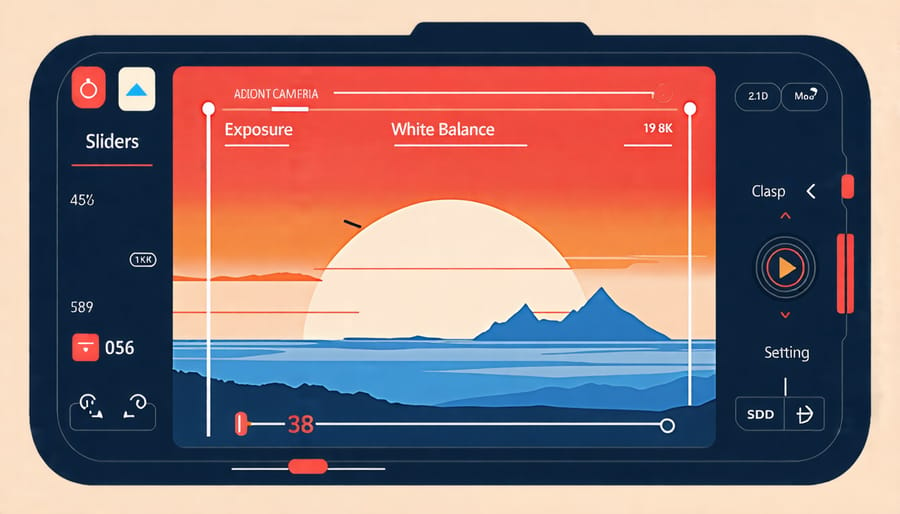
Exposure and White Balance
Adjusting exposure and white balance on your action camera can drastically improve the quality of your footage, ensuring optimal color accuracy and brightness. Think of exposure as the amount of light your camera sensor collects; too much light can wash out details, while too little results in dark, murky scenes. Begin by examining your scene—action cameras often feature automatic exposure settings, but for more control, try the manual mode to tweak shutter speed and ISO according to your environment.
White balance, on the other hand, balances the color temperature in your shot to make sure whites appear neutral, without a color cast. Indoors lit with tungsten lights can make everything appear yellowish, while outdoor scenes might seem too blue. Most action cameras have preset modes for different lighting conditions—daylight, cloudy, tungsten, and so on. For the adventurous, some cameras offer a custom mode to fine-tune the balance yourself.
Experiment with these settings, perhaps on a morning hike or an afternoon at the skate park, and you’ll gradually learn how to harness them for vibrant, authentic footage that truly captures the moment.
Stabilization and Auto Modes
When capturing fast-paced activities, stabilization features in action cameras can make a world of difference by ensuring smooth footage. These cameras often come equipped with electronic or optical stabilization options to reduce shakiness and produce cleaner, more professional-looking videos. Electronic image stabilization, or EIS, is common in action cameras and works by cropping the video slightly to maintain a stable appearance. For most adventures, this is more than sufficient, but be aware that it may reduce frame size slightly.
Switching to auto modes can be a game-changer, especially in changing conditions where you don’t have time to adjust settings manually. Auto modes handle settings like exposure and white balance on-the-fly, freeing you to stay focused on capturing those critical moments without interruption. However, the downside might be a lack of creative control, leading to footage that might not exactly match your artistic vision. For example, while rock climbing, using automated settings ensures you won’t miss a shot when lighting shifts unexpectedly. For enthusiasts and pros alike, experimenting with a mix of stabilization and auto settings can unlock new creative possibilities while maintaining the quality of your dynamic shots.
Audio Settings
Capturing great sound with your action camera might seem challenging, especially when you’re out in the wild or on a windy day. However, with a few smart audio settings adjustments, you can significantly improve your results. Start by setting your camera to its highest audio quality option—many action cameras allow you to choose between different audio bit rates. Opt for the highest rate for clearer sound.
Wind noise often poses a significant problem, but enabling the built-in wind noise reduction feature can help. This feature, available on many models, automatically filters out wind interference, ensuring that your dialogue, ambient sounds, or music remains crisp.
For enthusiasts aiming for professional-grade audio, consider connecting an external microphone. Some action cameras support external mics, which can be invaluable for interviews or capturing precise audio details. Remember, sound is as crucial as visuals in storytelling, so spend a moment adjusting these settings before diving into your next adventure.
Pro Tips for Action Camera Enthusiasts
Real-World Examples
Picture this: you’re snowboarding down a steep mountain, and you want to capture every thrilling turn and jump in crisp detail. By setting your action camera’s frame rate to 60fps, you’ll achieve smooth motion that makes viewers feel like they’re right there with you. Now, let’s shift to a serene underwater adventure. While diving, you might encounter vibrant marine life. Here, adjusting your white balance to “underwater” can enhance the natural colors of the ocean, ensuring every coral and fish pops with life.
Consider a mountain biking expedition on a bright, sunny day. The high exposure can wash out your footage, but by using the manual exposure setting to compensate, your video retains both the sky’s blue and the forest’s greens. Finally, imagine filming a sunset timelapse. Set your camera to take one photo per second, capturing the transition of colors and shadows as day turns to night, resulting in a breathtaking montage. These examples highlight how tailored settings can turn a simple outing into a cinematic masterpiece.
Common Mistakes and How to Avoid Them
One common mistake action camera users make is neglecting to adjust frame rate and resolution settings for different environments. Shooting at 60fps might be perfect for capturing fast action scenes, like a mountain bike ride, but it can be unnecessary and memory-heavy for slower moments. Opt for 24fps or 30fps for more cinematic captures. Another pitfall is improper exposure settings, which can lead to washed-out footage in bright conditions or overly dark videos in low light. Remember to set your camera’s exposure compensation to suit the lighting conditions.
White balance is another area where users often err. Auto mode might seem handy, but it can result in inconsistent color tones, especially in changing light conditions. Experiment with fixed white balance presets or manual settings for more accurate colors. Lastly, overlooking stabilization settings can lead to jittery footage. Enabling electronic image stabilization can significantly improve video smoothness without the need for a gimbal. Through mindful adjustments, you can avoid these common mistakes and enhance your shooting prowess.
Conclusion
As we wrap up, exploring the world of action camera settings empowers you to capture the most stunning moments, whether you’re immersed in thrilling action photography or just capturing your day-to-day adventures. Understanding and experimenting with aspects like resolution, frame rate, and exposure can drastically enhance your images and videos, ensuring that your final product is both sharp and engaging. Don’t shy away from tweaking settings and venturing into different environments; real-world experience is your greatest teacher. Alongside honing your skills, be aware of common mistakes to avoid, ensuring your progress remains steady and enjoyable. Whether you’re a seasoned pro or an eager beginner, the journey of mastering your action camera enriches your creative repertoire, letting you tell your unique visual stories with flair. Happy shooting!

